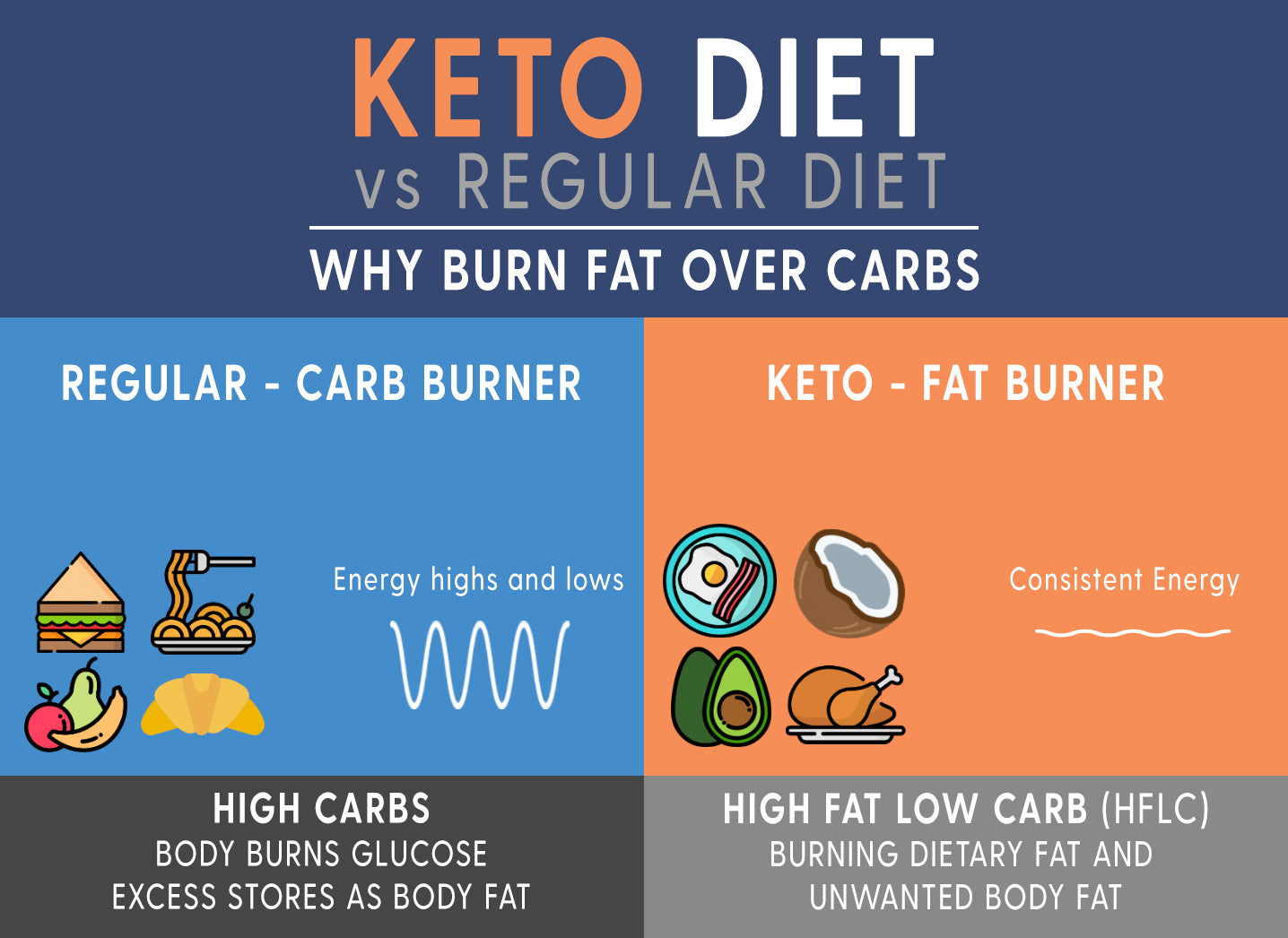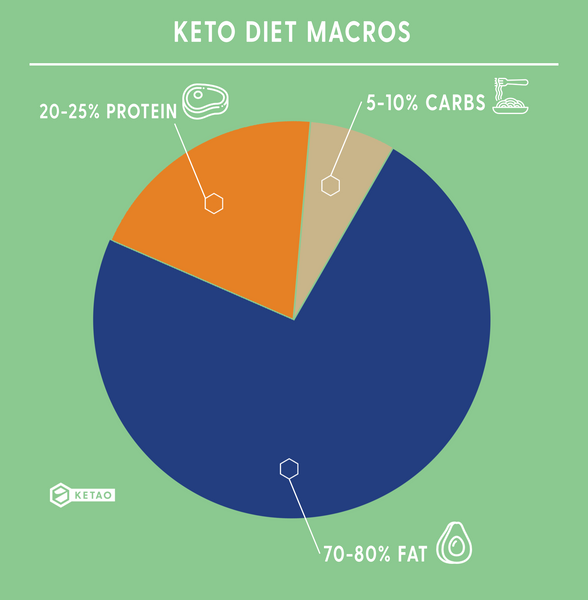Your Cart is Empty
The simple definition of Ketosis is when the body uses fat as the primary source of energy instead of carbohydrates.
When your body doesn't have enough carbohydrates (glucose) to burn, it starts to burn fat as an energy source instead. This is a metabolic state called "ketosis".
For the average person you can eat up to 30 carbs per day on the keto diet, slightly more for athletes. Whilst drastically reducing your carb intake, you will also need to increase your fat intake.
Healthy fats are key in successfully transitioning to a keto diet. A general rule of thumb is 70-80% of your total calories are to come from fat. Your body will then start to use fat as a fuel rather than carbohydrates.
These are some of the best healthy fats to get into ketosis fast:
Supplementing with exogenous ketones helps to speed up the process by giving the body actual ketones to start using as fuel. Taking beta-hydroxybutyrate (BHB) works most effectively, as it is the most abundant ketone in the body.
Supplementing with BHB can put the body into ketosis in less than 24 hours. However to maintain the state of "ketosis" you will need to follow step 1 and keep a low carbohydrate intake with a high fat intake in your diet.
One last thing to note about exogenous ketones is that they will reduce and or eliminate the keto flu associated with the transition into ketosis.
Fasting is commonly done in conjunction with a keto diet, especially in the early stages.
Some of the benefits of fasting are:
When fasting is done along side a ketogenic diet, it helps put the body into ketosis faster and helps with fat loss.
Exercise helps to use up the body's glycogen stores. Once the body runs out of glycogen and this isn't replaced with more carbohydrates, the body then will start to burn fat.
Tip: We recommend going for a brisk walk, upon waking, on an empty stomach or after drinking ketones.
The ketogenic or “keto” diet restricts the intake of foods that contain sugar and carbohydrates, and instead relies on fat as a fuel.
One of the main benefits of a higher fat diet is consistent energy levels and increased mental performance to power through your day.
In a traditional western diet, foods are broken down into sugar (insulin and glucose) in our blood once we eat them, and if there is excess calories, these will much more easily stored as body fat and result in unwanted weight gain.
Ketao strives to make the keto and low carb lifestyle more achievable, and effective.

Fat is broken down into ketones and is the most efficient energy source for the body to use as it burns for longer and doesn't have a crash associated with carbohydrates.

Ketones are what the body produces when it’s burning fat for energy instead of glucose. One of the main benefits is burning body fat, however ketosis has many other health benefits such as:
Mental Fog is normal
When transitioning into ketosis your body will lose its main source of fuel, carbohydrates(glucose). If you have never followed a low carb high fat diet(LCHF), this will be a totally new thing for your mind and body.
When your body is burning through the last glycogen stores it will then look for more, and won't initially know where to find energy. In this phase it's common to have some brain fog, become easily irritated and possibly experience headaches.
The best thing to do is to stay as low carb as possible, forcing the body to use up all of the glycogen stores faster and then moving onto fat as a fuel.
Keto Flu, Headache
Not everyone will experience a headache when transitioning into ketosis, it depends on how easily your body is able to change from burning carbohydrates to burning fats.
For most people their body has been used to burning carbohydrates for fuel their whole life, so it can take a small adjustment period which unfortunately can include the Keto Flu usually accompanied by a headache.
But hang in there, this won't last for long, especially if taking exogenous ketones. And when your body is in ketosis and your mind and body are working better than ever you'll be grateful that you hung in there.
Remember, ketones are a high quality, efficient fuel source for the mind and body. So once you start converting your fats into ketones your brain function becomes optimised.
First time taking Ketones
If you previously haven't followed a LCHF diet and are about to start taking ketones we recommended starting out with a half serving for the first couple of days, then moving to a full serving.
Sugar, also known as glucose is what the body uses for energy. Sugar can be converted into energy very quickly compared to other options the body has. However using sugar as the primary energy source has some negative effects.
Sugar may be quick, but it certainly isn’t efficient for the body. When the body burns sugar as an energy source it also produces free radicals and other harmful compounds, and less energy is created when compared to using ketones.
Ketones are a much more efficient fuel that inhibits the production of free radicals and harmful compounds. There are many more benefits associated with ketones, weight loss being one of these as the body becomes an expert at breaking down fat and converting it into ketones.
The brain is also a huge benefactor of using ketones instead of glucose. Studies have been done on people with parkinson’s disease and other cognitive issues and have shown that using ketones as a fuel instead of glucose had many positive effects.
Products to help you achieve and maintain ketosis: